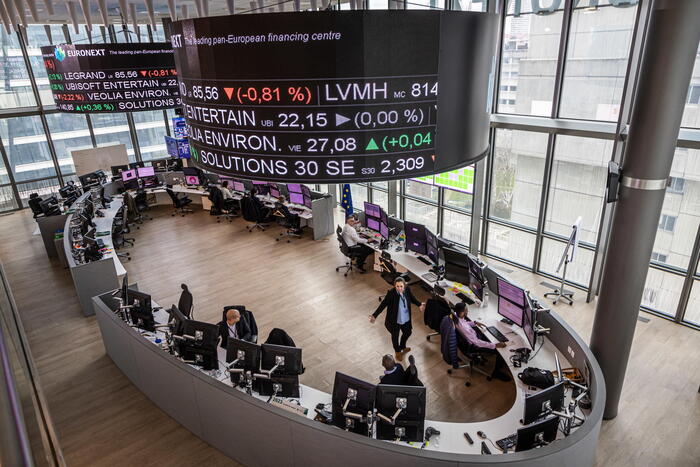In 2015, John Landgraf, president of the US channel FX and one of the great oracles of today's television age, coined the term
peak TV
(peak of television) to describe a moment when the number of series kept increasing.
"There is simply too much television," he warned.
Then 420 series were released in the United States, according to an annual report by FX.
Landgraf calculated that in 2017 television production would reach its ceiling and the curve would begin to decline.
He was wrong for two years.
According to last year's data, published a few days ago, in 2020 493 series produced in the United States were released, a figure that, for the first time in 13 years, is lower than the previous year: 532 in 2019. But the main reason is not it seems to be the saturation of the market and the explosion of a supposed television bubble.
The pandemic and the stoppage of audiovisual production that it caused, in addition to the difficulties that the new normal has added to the reactivation or launch of television projects, has been the main reason that the pace has stepped on the brake.
Now analysts are wondering if it will be just something temporary or if it has really reached the peak of the number of series.
The covid pandemic not only paralyzed audiovisual production.
It also caused a handful of series that had already been renewed to be canceled due to logistical difficulties to shoot, increased production costs and the complications of reorganizing the agendas of those involved.
According to another report by the specialized magazine
Variety
, the total number of non-children's television productions, both fiction and non-fiction, aired in 2020 in the United States (on free-to-air television, pay television and platforms) was 1,577, a This is the first decrease compared to the previous year since the scriptwriters' strike from November 2007 to February 2008 made production in 2008 less than that of 2007. The decrease in 2020 compared to 2019 is only 2, 7%, but it is not distributed equally between the different television models.
The drop has been very marked in cable channels (21.3% less), where the pandemic has added to the already pressing shift towards streaming.
On the other hand, the number of fiction and non-fiction productions on the platforms has grown again, with 164 more programs than in 2019, an increase of 34.7%.
Despite the decline in the number of fiction series, experts are cautious about whether the ceiling of television production in the United States has actually been reached.
The media analyst Gavin Bridge predicts in
Variety
that in 2021 the number of productions released by the platforms will be close to that of 2020. "The era of incessant growth of television could have ended forever", adventure.
Other experts predict that in 2021 the halt will continue, but that growth could recover in 2022. “I have the feeling that it is still too early to know if the ceiling has been reached or not, although it was reasonable to think that the peak was being reached. ”, Says Concepción Cascajosa, professor of Audiovisual Communication at the Carlos III University of Madrid.
Cascajosa points to another key factor in this slowdown: while production in free-to-air and cable channels remained more or less stable in recent years, growth was dizzying in platforms.
“They were new services that had to create a catalog.
Now the video-on-demand services that are launched are part of established groups and there is not so much a new production as a reorganization and redistribution of production ”, he explains, referring to recent platforms such as HBO Max, Peacock or CBS All Access (which are will transform into Paramount + in 2021).
This slowdown is also beginning to be noticed in Spain, according to Cascajosa, although he clarifies that it will take longer to notice its effects.
"There is a certain resistance to putting things in motion while waiting to remove others that were left in the drawer or that have been delayed," says the expert.
The pandemic has not only had an effect on the amount of production, but also on its content.
Among the trends that are beginning to be noticed in the series that are being prepared in the US networks, the flight from dystopian and tragic themes, the reduction of scenes with crowds and the trend towards shorter and less expensive productions that allow to adjust the budget. and reduce break-in time.
The trends point to friendly series that invite escapism to put the real-life dramas aside.
The expansion of streaming in Europe
According to a report by the European Audiovisual Observatory published on Tuesday, the revenue from the video on demand market in the European Union reached 11.6 billion euros in 2020. This figure is driven by the power of subscription platforms and their strength due to the confinements derived from the pandemic. According to the report with data from the consulting firm Ampere Analysis, 140.7 million Europeans subscribe to some video on demand service, a figure much higher than the 103.2 million in 2019 and the 73.6 million in 2018. European Audiovisual Observatory estimates that Netflix earned about 5,340 million euros from the 54.4 million subscribers it has among all EU countries. It is followed by Amazon Prime Video, with 29 million subscribers and earnings of about 910 million euros.







